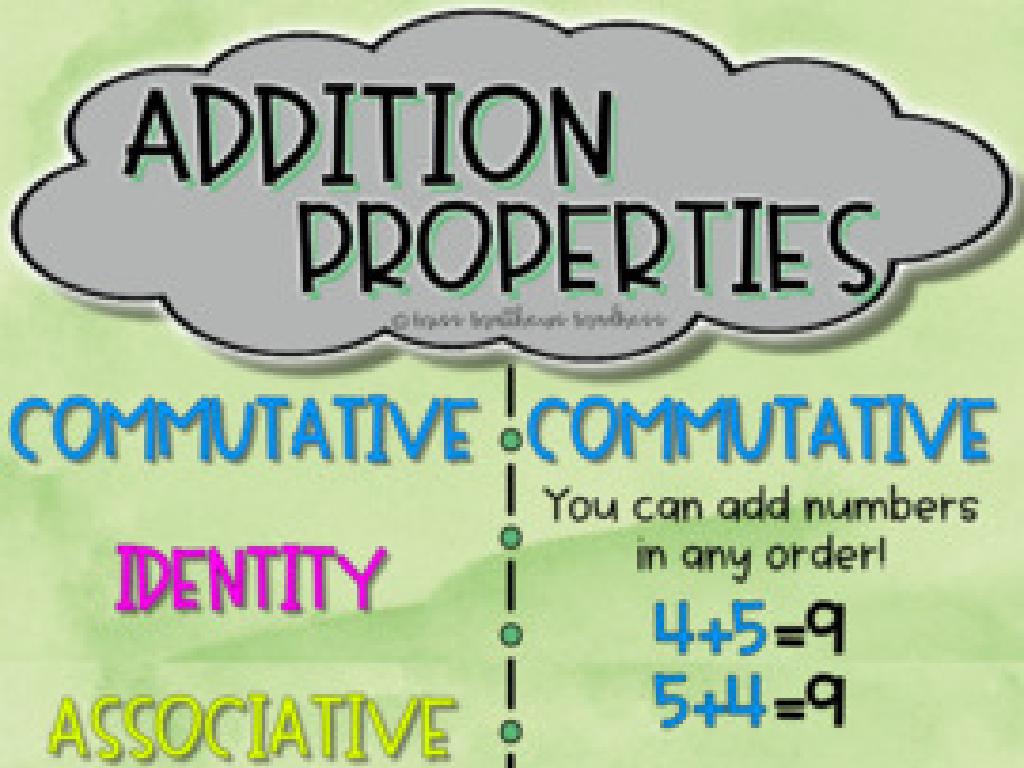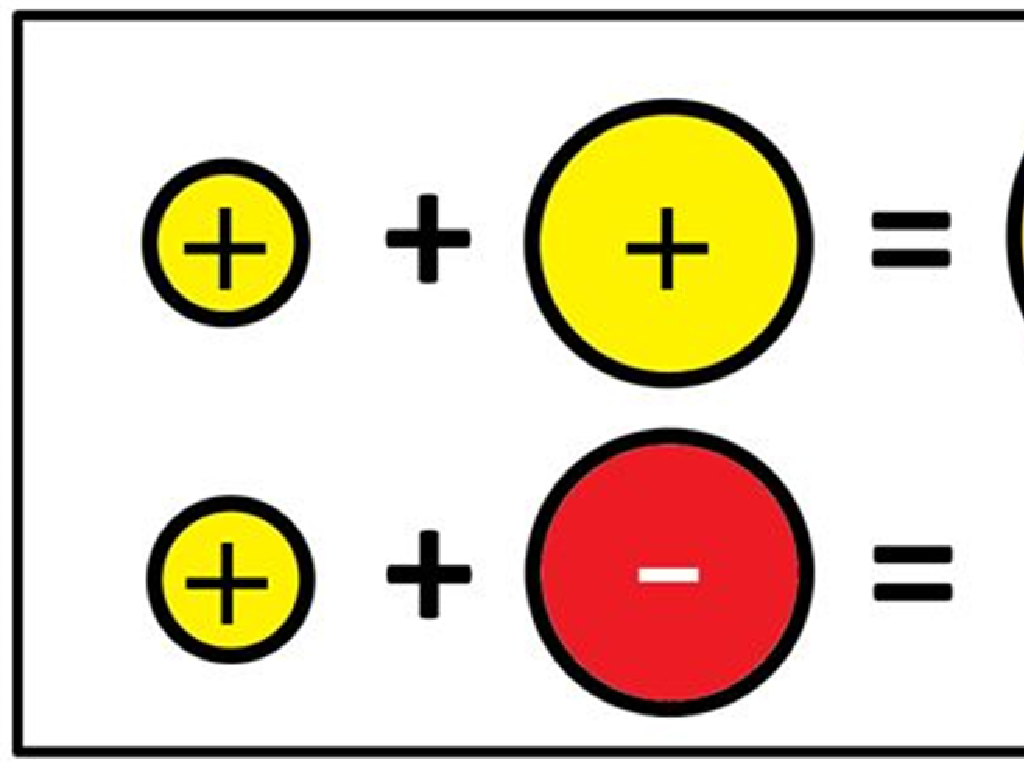Use The Correct Verb - With Compound Subjects
Subject: Language arts
Grade: Seventh grade
Topic: Verb Types
Please LOG IN to download the presentation. Access is available to registered users only.
View More Content
Correct Verb Usage with Compound Subjects
– Understanding subject-verb agreement
– A verb must agree in number with its subject
– Compound subjects in sentences
– When two subjects are joined by ‘and’, use a plural verb
– Importance of correct verb usage
– Proper verb agreement makes sentences clear and understandable
– Examples in writing and speaking
– ‘The cat and dog are playing’ not ‘The cat and dog is playing’
|
This slide introduces the concept of subject-verb agreement and its application to compound subjects. Emphasize the rule that when subjects are connected by ‘and’, they typically require a plural verb. Highlight why correct verb usage is crucial: it ensures clarity and correctness in both written and spoken English. Provide examples to illustrate proper usage, and encourage students to create their own sentences with compound subjects. Discuss potential exceptions to the rule, such as when a compound subject refers to a single entity or idea. Use interactive activities to reinforce learning, such as sentence correction exercises or group work where students identify and correct errors in verb agreement.
Compound Subjects and Verbs
– Define a compound subject
A compound subject consists of two or more subjects joined by a conjunction.
– Examples of compound subjects
For instance, ‘The cat and dog are playful’ combines ‘cat’ and ‘dog’ as the subjects.
– Verb agreement with compound subjects
The verb must agree in number with a compound subject. Use plural verbs if the parts are connected with ‘and’.
– Practice with compound subjects
|
This slide introduces the concept of compound subjects in sentences and how they affect verb agreement. A compound subject is formed when two or more individual subjects are connected by a conjunction like ‘and’ or ‘or’. It’s crucial for students to understand that the verb must agree with the compound subject in number. Typically, when ‘and’ connects the subjects, a plural verb is used, whereas with ‘or’, the verb agrees with the nearest subject. Provide examples and encourage students to create sentences with compound subjects. In the practice section, students can work on exercises that require them to choose the correct verb form to match the compound subject.
Singular vs. Plural Verbs with Compound Subjects
– Review singular and plural verbs
– Singular verbs end in -s; plural verbs do not.
– Matching verbs to compound subjects
– The verb must agree with the subject’s number.
– Practice identifying verb forms
– Is the verb in ‘The dog and cat plays/plays’ singular or plural?
– Rules for verb agreement
– Use singular verbs with ‘or’, ‘either/or’, ‘neither/nor’ when subjects differ.
|
This slide aims to reinforce the understanding of verb agreement with compound subjects. Begin with a review of how singular verbs typically end in -s, while plural verbs do not. Emphasize the importance of matching the verb to the subject’s number, even when the subject is compound. Provide practice examples for students to identify whether the verb is singular or plural. Discuss the rules for verb agreement, especially with compound subjects connected by ‘and’, which usually take a plural verb, versus ‘or’, ‘either/or’, ‘neither/nor’, which take a singular verb if the subjects differ in number. Encourage students to look for clues in sentences and to remember these rules when writing.
Verb Agreement with Compound Subjects
– ‘And’ connects two singulars to plural verb
– For example, ‘The cat and dog are friendly.’
– Same subject? Use singular verb
– For instance, ‘The artist and musician is talented.’
– ‘Or’ or ‘nor’ agrees with closest subject
– As in, ‘Neither the boys nor the girl is going.’
– Practice with examples
|
This slide aims to teach students the rules for verb agreement when dealing with compound subjects. Rule 1 emphasizes that when two singular subjects are connected by ‘and’, they are treated as plural, thus requiring a plural verb. Rule 2 states that if the compound subject refers to the same entity, a singular verb is used. Rule 3 covers the scenario where ‘or’ or ‘nor’ is used, in which case the verb should agree with the subject closest to it. Provide examples for each rule to ensure understanding. Encourage students to create their own sentences following these rules to reinforce the concept.
Verb Agreement with Compound Subjects
– Examples of correct verb usage
– ‘The cat and dog are playing together.’ – ‘are’ agrees with compound subject.
– Matching verbs to compound subjects
– Determine if ‘and’ suggests a plural subject or if ‘or’/’nor’ leads to a singular verb.
– Class activity: crafting sentences
– Create your own sentences using ‘and’, ‘or’, ‘nor’ with subjects.
|
This slide aims to solidify the students’ understanding of subject-verb agreement when dealing with compound subjects. Start by showing examples where the verb correctly matches the subject in number. Emphasize the difference in verb agreement when subjects are combined with ‘and’ (usually plural) versus ‘or’/’nor’ (singular or plural depending on the nearest subject). For the class activity, encourage students to write sentences with compound subjects, ensuring they use the correct verb form. This will help them apply the rules in a practical context. Provide guidance and feedback as they work through the activity. Offer additional examples if needed and be prepared to answer any questions that arise during the practice.
Group Activity: Verb Agreement Challenge
– Split into groups, correct sentences
– Present and explain your corrections
– Why did the verb ‘was’ change to ‘were’ in your sentence?
– Class discussion on verb agreement
– Why is it important for subjects and verbs to agree?
– Understand subject-verb agreement rules
|
This group activity is designed to reinforce the concept of subject-verb agreement with compound subjects. Divide the class into small groups and provide each with sentences that have incorrect subject-verb agreement. Instruct them to identify errors and make corrections. Afterward, each group will present their sentences and explain the reasoning behind their corrections. This peer teaching method helps solidify understanding. Conclude with a class discussion on the importance of subject-verb agreement, emphasizing clarity in writing and speaking. For the activity, consider sentences like ‘The cat and dog is friends’ vs. ‘The cat and dog are friends.’ Provide guidance on how to identify the subject, determine if it’s singular or plural, and choose the correct verb form.
Class Activity: Verb Agreement Game
– Match subjects with correct verbs
– Pair up for the verb game
– Engage in interactive learning
– Reinforce understanding of subject-verb agreement through play
– Review verb agreement together
– Discuss as a class to solidify knowledge
|
This activity is designed to reinforce the concept of subject-verb agreement with compound subjects. Students will work in pairs to match subjects with the correct form of the verb, turning the learning process into a fun game. This interactive approach helps students to engage with the material actively, rather than passively listening to a lecture. After the activity, review the answers as a class to ensure that everyone understands the correct verb agreements. Possible variations of the game could include using flashcards, a digital quiz format, or a board game setup. The goal is to create a dynamic learning environment where students can learn from each other and immediately apply their knowledge.
Mastering Compound Subjects with Verbs: Recap & Homework
– Review of compound subjects
– Importance of correct verb usage
– Using the right verb form makes sentences clear and understandable.
– Homework: Craft 10 sentences
– Use compound subjects and match them with the correct verb forms.
– Enhance communication skills
|
As we conclude today’s lesson, it’s important to recap the key points about using the correct verbs with compound subjects. Understanding how to match subjects with the right verb forms is essential for clear and effective communication. For homework, students are expected to write ten sentences that include compound subjects paired with the correct verbs. This exercise will help reinforce their understanding of the subject-verb agreement rules we’ve discussed. Encourage students to be creative and come up with sentences that reflect their interests or daily life. During the next class, we can review some of these sentences to ensure comprehension and correct application of the concepts.





